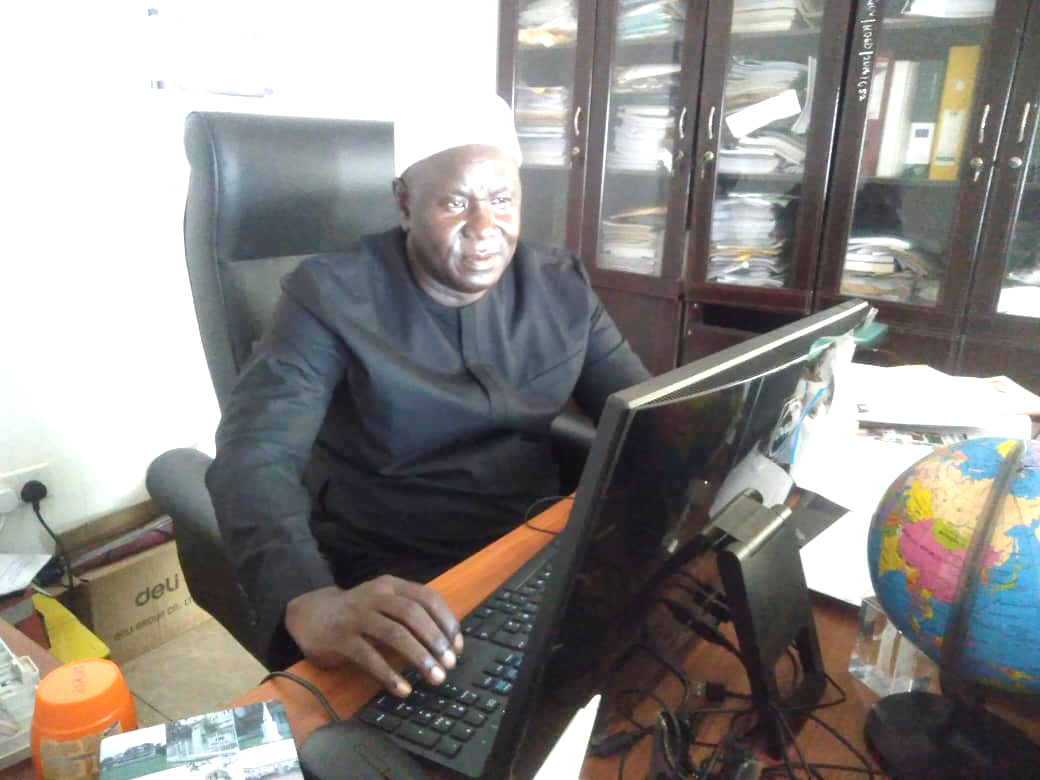By Momodou L Jaiteh,
CEO Kaba Communications
Banjul, The Gambia – “It was a stressful and shocking moment for me and my family when we lost all our belongings and livelihoods to the devastating recent floods,” said Mr. Aboubacarr Marong, a 22-year-old young man from Tobacco Road, the hardest hit area by the latest flash floods in the Ganbian capital city of Banjul.
Sitting under a neam tree and playing draft, Marong, a soccer player for a club in Banjul, said his family had to migrate to the houses of relatives and friends who were less affected by the flooding incident.
Like Marong like Saine
Mrs. Maimuna Saine, another flood victim living at Ibo Town Street within SerreKunda, one of Gambia’s largest cities in the Kanifing Municipal Council, disclosed that the flash floods had negatively impacted her family.
Mrs. Saine who currently lives with her family of 11, said she has had no job since her graduation from school a long time ago. Consequently, she now engages in petty trading such as food items, baby toys, among others, to take care of her family.
She appealed to the government and donors for more assistance towards meeting their basic needs for survival, while also calling for the construction of a proper drainage system as well as other defense mechanisms against future floods in her community.
For another victim, Ms. Kaddy Bojang who lives with a family of 15 members at Kotu Street in SerreKunda, the floods caused sleepless nights for her and her family. She narrated the nightmares they went through from last July through October ending.

Backstory
Following this year’s unusual heavy rains recorded in the Gambia, over 47,104 flood victims were recorded in the tiny West African nation of The Gambia, depicting the dangerous consequences of climate change.
The flash floods that hit the country were said to be amongst the worst in nearly half a century. The torrential rains and attendant thunderstorms caused flooding and widespread damages to lives and property in many parts of the country especially the densely populated capital city of Banjul.
According to Gambia’s National Disaster Management Agency (NDMA) 11 people died, some 9,965 children below the ages of five and 3,088 pregnant and breastfeeding women, were among those severely affected.
Meanwhile, over 7,000 households were hit hard in a country that has a population of less than three million inhabitants.
Government’s intervention
According to the 22-year-old Marong, he and many other victims had to stay with some friends and family members for over a month, but that the Gambian government also helped them with food and cash assistance of about $200 each paid to support the victims.
Many of the victims, especially in the nation’s capital, were camped at St Augustine’s Senior Secondary School complex during the summer vacation from July through September. But when schools opened on September 19 for the start of the new academic year, the victims had to vacate the school buildings and look for other places to stay.
The Gambian government once again intervened by relocating others to Friendship Hostel of the Independence Stadium at Bakau Town which lies about 10 km outside Banjul. However, over time the management of the hostel reportedly told the flood victims to look for a permanent place to stay.
Ms. Adama Jallow, one of the victims and a mother of five children who stayed at the Friendship Hostel disclosed that when she got notification from the hostel’s management she went round looking for a house to rent so that she and her family could move in there. However, she said the houses she had seen were “too expensive” as house owners pushed up rent charges.
Similar situations across The Gambia
The stories of these victims are similar to those of other Gambia’s flood victims across the seven other administrative regions of the West African nation, with the most affected regions as the Banjul City and the Kanifing Municipal Council. The latter recorded a total of 1,657 victims.
According to the government, a total of 6,654 “internally displaced persons” were registered and of these, 52.4 per cent were women and girls who needed specific support or protection as “they faced exacerbated vulnerability and may be forced to resort to negative coping strategies.”
Also, the government claimed about 1,238 sanitary facilities were destroyed by the floods across the various settlements in the country.
But Mr. Marong thanked the government, Gambia Red Cross and other organisations that helped him and other victims at the height of the crisis.
He, however, quickly added that the Gambian government should create job opportunities for young Gambians so that they can help their families with better housing facilities.
That way, he said, they can get better prepared against similar natural disasters caused by climate change.
“Here in Banjul, there are very few job opportunities for young people. There is no human being who does not want a job. So the Gambian government needs to provide skilled jobs for the youth so that we can help ourselves and families,” he said.
Quizzed as to whether it would be wise for the government to move the capital city of Banjul which is prone to flooding, Marong said there is no need to move the capital city outside Banjul. “It is nice here with friendly communities. I was born and brought up here in Banjul. Besides, it is the seat of government.”
Government official speaks
Mr. Sanna Dahaba, the Executive Director of Gambia’s National Disaster Management Agency (NDMA), thanked the government for putting disaster governance in the nerve centre of its development agenda.
According to him, COVID-19, conflict in the neighboring Southern Senegalese province of Cassamance, and climate change have brought up many economic challenges for the government and its partners. He spoke of climate change as something real which effects were being felt everyday.
“In the Gambia, there is a need for a change of attitude. People must stop settling on water ways. Also, there is an unregulated settlement coupled with poor planning and the kind of drainage system we have here,” he said.
Mr. Dahaba called on people to respect the government’s policies and laws such as anti dumping regulations with a view to attaining environmental protection.
“The other big challenge for us is that the issue of climate change adaptation measures are not being followed by many Gambians. Experts’ advice on mitigation is also not being followed. So all these need to be addressed,” he added.
Mr. Dahaba thanked President Adama Barrow for coming up with a resettlement package for the victims, most of whom he said have been helped to get back their homes.
Activist’s demands
Dr. Malanding Jaiteh is a climate activist and head of Gambian Adaptation Project who sees climate change as a global issue that has negative impacts on small countries like the Gambia. According to him, the tiny West African nation has low and flat land across the country and therefore any rise in sea level affects the entire nation.
This, he says, makes the Gambia prone to flooding and other disasters like destruction of compounds and farmlands for agriculture purposes, forcing farmers to be jobless and becoming poorer.
He therefore calls for a new way of doing things in the Gambia while emphasising the need for implementing ‘smart agriculture’ and adaptation measures.




